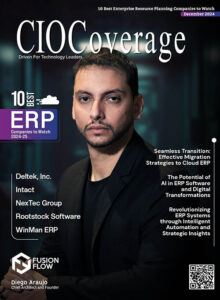Define – Measure – Refine – Succeed
“Measure your business impact in our disrupted, digital world”
 Digitalising HR is a game-changer for businesses, enabling us to deliver efficiencies, excellent employee experiences and better business outcomes, providing a competitive advantage for organisations.
Digitalising HR is a game-changer for businesses, enabling us to deliver efficiencies, excellent employee experiences and better business outcomes, providing a competitive advantage for organisations.
Yet this isn’t about technology alone. Digitalising is a mindset, a way of thinking and working, creating streamlined, thoughtful, cohesive digital solutions with the human touch and the employee experience at the core – it’s about taking a holistic approach.
What differentiates a successful digital HR strategy is not the number of activities completed, or time, resources and budget invested – it’s value. A successful strategy delivers significant value for our people, business and customers, ensuring a return on investment for our organisations.
Measuring this value, and the resulting business impact is key, and data is the critical component. Data makes the invisible – visible, and it helps us connect the dots.
Defining and tracking the metrics that work best for your organisation will help guide you on your digital HR journey to unlock the power of technology, shape the most effective solutions and deliver exceptional business outcomes.
In this resource you’ll find metrics categorised under four sections – efficiency, engagement, productivity and profitability. We recommend that you select metrics from each of the four sections to create a comprehensive metric set tailored to your own business needs, to help drive your path to success.
Efficiency
1.Employee hours saved
Transforming our HR products and services through simplification and digitalization delivers clear business benefits by removing complexity and waste – both for employees experiencing these processes, and for the teams managing them across HR, IT and beyond. Measure the total time spent on specific tasks or processes to create your baseline, and track back against this over time to calculate employee hours saved.
2.Task success / re work rate
Products and services which are not intuitive or easy to navigate drive waste as employees get stuck, requiring help or intervention. Task success measures the effectiveness of a process and how much re work is being generated which drives cost back into the organisation. Determine your task success rate by calculating the average amount of time it takes all users to complete a task in a given time period, tracking this over time. Consider that the higher your re work rate, the lower your task success rate will be. Aim to reduce the amount of re work to increase task success.
3.Error reduction rate
Refining our processes, digitalizing and automation of manual ways of working enables us to remove human error, and reduce the requirement to maintain and validate data manually, helping to reduce our error rate. Errors create re work, reducing our task success rates, slowing down performance and results. Measuring and actively working to reduce our error rate over time creates business efficiencies.
4.Removal of non-value-add activity
As an HR function, everything we do must add value for our people, business and customers – from our HR book of work, our projects and programmes, technology solutions, right down to each and every process step and digital workflow. If you come across anything that is driving waste, or simply not adding value, remove it to enable teams to focus on value adding activities. Measuring removal of your non-value-add activity can be a strong indicator of progress on your simplification and digital transformation journey.
Engagement
1.Net promoter score (NPS)
Net promotor score (NPS) measures employee satisfaction and loyalty through their willingness to recommend your company, or your HR products and services with the use of a single question. Your score can help you identify successes, hotspots and areas of improvement over time. For a deeper dive including how to calculate NPS check out: https://www.surveymonkey.co.uk/mp/nps-calculator/
2.Employee happiness
Our people are our greatest asset – they are our business. To harness the power of our people we need to consciously create an environment where not only can they survive, they can thrive – an environment where they want to show up for work and deliver their best. Research shows that an engaged workforce outperforms the competition – measuring and tracking employee happiness levels enables you to drive continuous improvement on your transformation journey. Capture this metric in your existing employee engagement and pulse surveys, taking a check at regular intervals. Using an average score over time rather than in isolation ensures you take into account variances in your people’s working days and lives.
3.New employee satisfaction
We invest so much time, resources and budget in finding the right talent, yet often our on boarding lets us down. A poor on boarding experience can be brand damaging, resulting in early loss of new hires, driving significant cost back into the business. Research shows that a great experience can improve productivity, drive higher engagement and increase retention. Tracking the satisfaction levels of your new employees through surveys and focus groups enables you to understand your reality and drive improvements where required.
4.Organizational collaboration
Collaboration is critical to the success of digital transformation. Regardless of our business area or function, we are all part of the same organization with the same business strategy and goals, and when we truly collaborate within our teams, our functions and cross functionally the results we can achieve magnify. Organisational network analysis (ONA) tools such as Microsoft Workplace Analytics and Office 365 enable us to measure collaboration levels to maximise results.
Productivity
1.Digital adoption rate
The most critical objective of any digital transformation is outstanding levels of adoption – to drive better business outcomes. It doesn’t matter how amazing a new piece of technology is, if the change management isn’t effective, if the solution doesn’t land well and embed, and if your people don’t use it, it’s not a successful solution. At best it won’t deliver the results you’re looking for, and at worst it can result in an expensive experiment or require work arounds to create the outcomes you need. Tracking the adoption rate of your new technology solution is critical, enabling you to quickly identify issues and drive continuous improvement. Measure adoption rates using a combination of rate of use (see below) and through talking to your people or issuing surveys to identify how comfortable they feel using the new solution, understand how much value it’s adding and any areas for improvement.
2.Ease of use – digital solutions
The most successful digital solutions have a strong focus on the employee experience – solutions that our people can navigate with ease, creating efficiencies, high task success and minimal re work. This frees up our people to focus on their day jobs and enables HR, IT and other teams to focus on value adding activities. Measure and track the average completion time for your people to use a process, product or service, and the levels of intervention required such as requests for helpdesk support. Surveys can also be helpful in determining how the experience feels for your people.
3.Rate of use – digital solutions
Our digital solutions should be adding value to our people and business, ultimately delivering better outcomes. To maximise this value our solutions need to be efficient, effective and intuitive enabling our people to easily incorporate them into their everyday lives. Measure the success of your digital solutions through tracking log in rates, time spent in the system – which can be both positive and negative depending on effectiveness, task completion rates and volumes of calls or e mails to technical support teams.
4.Employee change agility
In our disrupted, digital world, the rate of change is the only constant and the rapid development of technology and automation is now a reality for us all. Change agility is the ability to respond to changes and challenges effectively and is critical for long term success. This means we need to take a regular temperature check to understand the readiness, capacity and resistance to change in our organisations, helping us take steps to build change agility where needed. You can measure your employee change agility anecdotally through on-going open dialogue across teams, business areas and functions.
Profitability
1.Revenue per employee
Revenue per employee is an efficiency ratio that roughly measures the revenue generated per employee working for the company. This metric is helpful in tracking the efficiency and productivity of the average employee, and monitoring this metric over time enables you to track growth or decline in overall efficiency. Calculate this metric by taking the revenue for the last 12 months divided by the current number of employees.
2.Return on digital investments
Calculating the return on your digital investments can be challenging – this is a long term metric which must be captured over time as the benefits are realised. To calculate the return first consider all the beneficiaries such as employees, business functions and customers, and determine your financial investment in the technology. Then aggregate all the related metrics that you’ve been tracking such as efficiencies and productivity gains, subtracting your technology investment to establish the total return over time.
3.Employee lifetime value (ELV)
Employee lifetime value (ELV) provides an indicator of the estimated financial value that an employee brings to an organization over the length of their employment. It can be used alongside other metrics and analysisto build out a picture of our organisations. ELV can be helpful to show financial investments in our people in context with the value they bring to our organisations over time. Our role as HR Leaders and functions is to help maximise ELV, positively impacting business outcomes.
4.Revenue through digital up-skilling
The upskilling and re skilling of our people is a critical component in digital transformation. Building a strong digital skillset will set you apart from the competition – as your people grow their digital skills, organizational performance and therefore profit, increases.
To calculate the revenue generated first aggregate all the related metrics that you’ve been tracking such as efficiencies and productivity gains, subtracting the total investment in upskilling and re skilling activities to establish the total return generated through digital upskilling.
Defining and tracking the metrics that work best for your organisation will help guide you on your digital HR journey to unlock the power of technology, shape the most effective solutions and deliver exceptional business outcomes.















